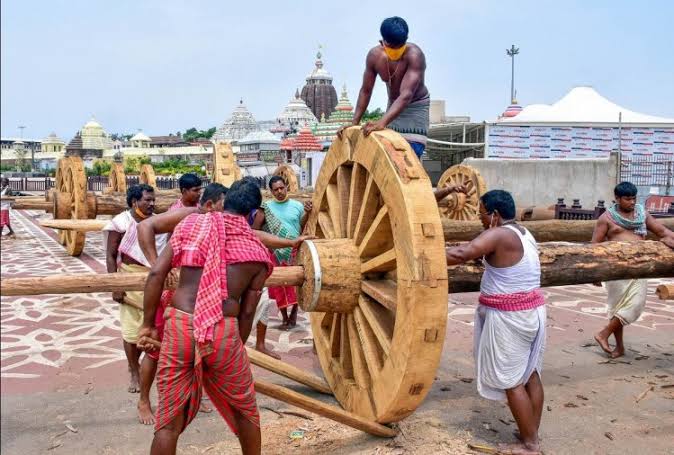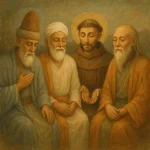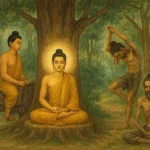Puri Jagannath Temple Rathyatra : History of Disruptions on the Yatra
The Supreme court on Monday allowed, with conditions, the Rath Yatra at Jagannath Temple in Puri, scheduled for 23 June. The temple committee, central and the Odisha governments have been asked to coordinate the event with necessary curbs to prevent the spread of covid-19. When we visit history there are several occassion when the Rath Yatra at Jagannath Temple didn’t organsied due to the attacks of Islamic rulers.
A peep into the history of the Jagannath temple reveals that the grand festival was not held for 32 years due to attacks on the temple by Islamic rulers between 1568 and 1735.

Following an attack by Kala Pahad, a general of Bengal king Suleiman Kirrani, on the temple in 1568, the Rath Yatra could not be held for nine years from 1568 to 1577.
In 1601, Mirza Khurum, a commander of the Bengal Nawab attacked the temple. But the priests saved the idols by shifting them to the Panchamukhi Gosani temple at Kapileswar, about 13-14 km from Puri. Due to the shifting of the idols, the Rath Yatra could not be held.
In 1607, Qasim Khan, the Mughal subedar of Odisha, attacked the temple. The idols were hidden and taken to Khurda and kept in the Gopala Jew temple. As a result, the Rath Yatra could not be held.

The Rath Yatra was not held in 1611 after Kalyan Mal, the son of Todar Mal (a famous courtier of Akbar), became subedar of Odisha and attacked the temple. The idols were shifted beforehand to Mahisanasi in the Chilika lake.
The festival was not held in 1617 after Kalyan Mal attacked the temple for the second time. Before the attack, the priests shifted the idols to Gurubaigarh in Chilika lake.
In 1621, the idols of the Lords were shifted following an attack by the Muslim subedar Ahmed Beg. Later, the Brahma of the idols was taken to Gadamanitri village in Khurda district. Due to the shifting of the idols, the Rath Yatra could not be held for two years in 1621 & 1622
In 1692, Ekram Khan, attacked, the temple. Prior to the attack, the priests shifted the Deities. They were kept in Banapur till 1707. Due to the absence of the deities in Jagannath temple in Puri, the Rath Yatra could not be held for 13 years.
The festival was not held in 1731 after Mohammed Taqi Khan, the Naib Nazim (Deputy Governor) of Odisha attacked the temple. The Deities were hidden in various places to avoid any harm.
As Taqi Khan attacked the Jagannath temple for the second time in 1733, the Deities were shifted to secret locations where the priests had performed secret rituals for more than two years. As a result, the Rath Yatra could not be held for three years from 1733 to 1735.
Now, Maharaj of Puri, Gajapati Maharaj Dibyasingha Deb appeals for allowing the Rathayatra. Except when the idols were hidden during Mughal attacks, it’s being stopped for the 1st time in history.



[video_ads]









